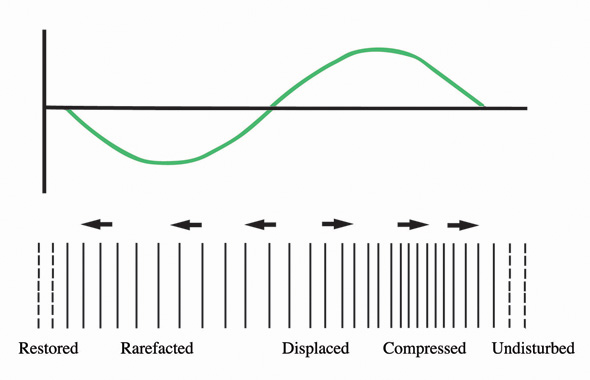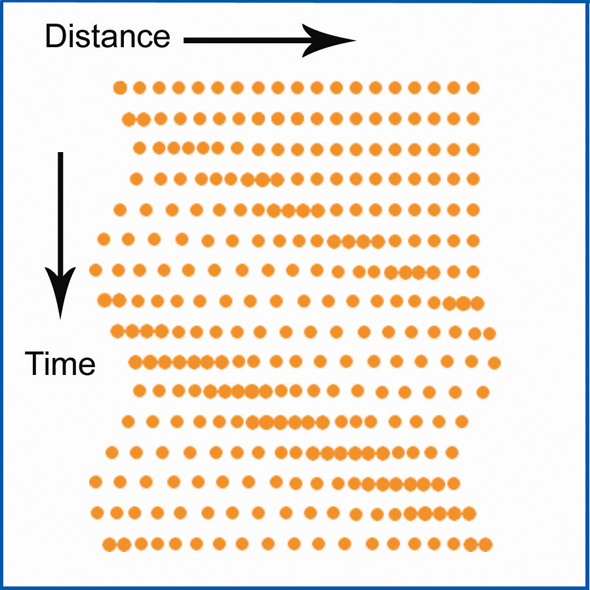Let’s have a look at sound particles, acoustic pressure, propagation medium density, particle velocity, acoustic energy, volume velocity, and acoustic impedance.
Abstract concepts? Nope—far from it. All are related to the physics of sound propagation in an elastic medium that result in changes to the displacement, pressure, density, temperature, and velocity within the medium.
In other words, this is at the basis of everything we hear, the scientific essence of sound.
Sound Particles. Sound requires a medium for the transmission of vibrations, the most common being air. Understanding sound propagation can be difficult because it’s not visible unless special opto-acoustical instruments are used.
One way to “visualize” sound propagation is to imagine the vibrations acting on invisible particles as the vibratory energy passes through a given spatial region. The acoustic “particle” is a small volume unit of air whose physical dimensions are smaller than the propagating sound wavelength. The particles move about a fixed equilibrium position as a function of time as the acoustical energy propagates through the medium.
The collision of neighboring particles transmits energy through the medium. From the standpoint of elementary mechanics, the particles undergo displacement, velocity, and acceleration, just as any moving body does.
Acoustic Pressure. Sound consists of a series of pressure maxima (compressions) and minima (rarefactions). The unit of acoustic pressure (p) is the pascal, abbreviated Pa. Acoustic pressure can be considered as the difference between the instantaneous pressure at a fixed point in a spatial region with the sound source present and with the source absent. The pressure maxima and minima oscillate above and below normal atmospheric pressure (po) in direct response to the acoustic particle motion (Figure 1).

A certain amount of acoustic pressure is necessary to evoke the sensation of hearing. For individuals with “normal” hearing, and unfortunately this may exclude some of our dear readers, the minimum acoustic pressure necessary for the hearing sensation is 20 X 10^-6 Pa (20 μPa).
This value is referred to as the reference acoustic pressure. This is equivalent to 0 dB sound pressure level (SPL). The amplitude, and therefore the SPL, of a sound wave is directly proportional to the acoustic pressure.
Propagation Medium Density. The density of a material is the mass per unit volume, expressed in units of kg/m3. For air at normal atmospheric conditions, the characteristic density (ρo) is 1.2 kg/m3.
When the pressure in the propagating medium changes there will be a corresponding density change in the medium. Pressure maxima result in a density increase while pressure minima result in a density decrease. Because air is a compressible fluid, there will be localized density changes as the acoustic energy flows through the air.
Figure 2 shows conceptually what is happening for a longitudinal sound wave in terms of the particle displacement and propagation medium density change.
















